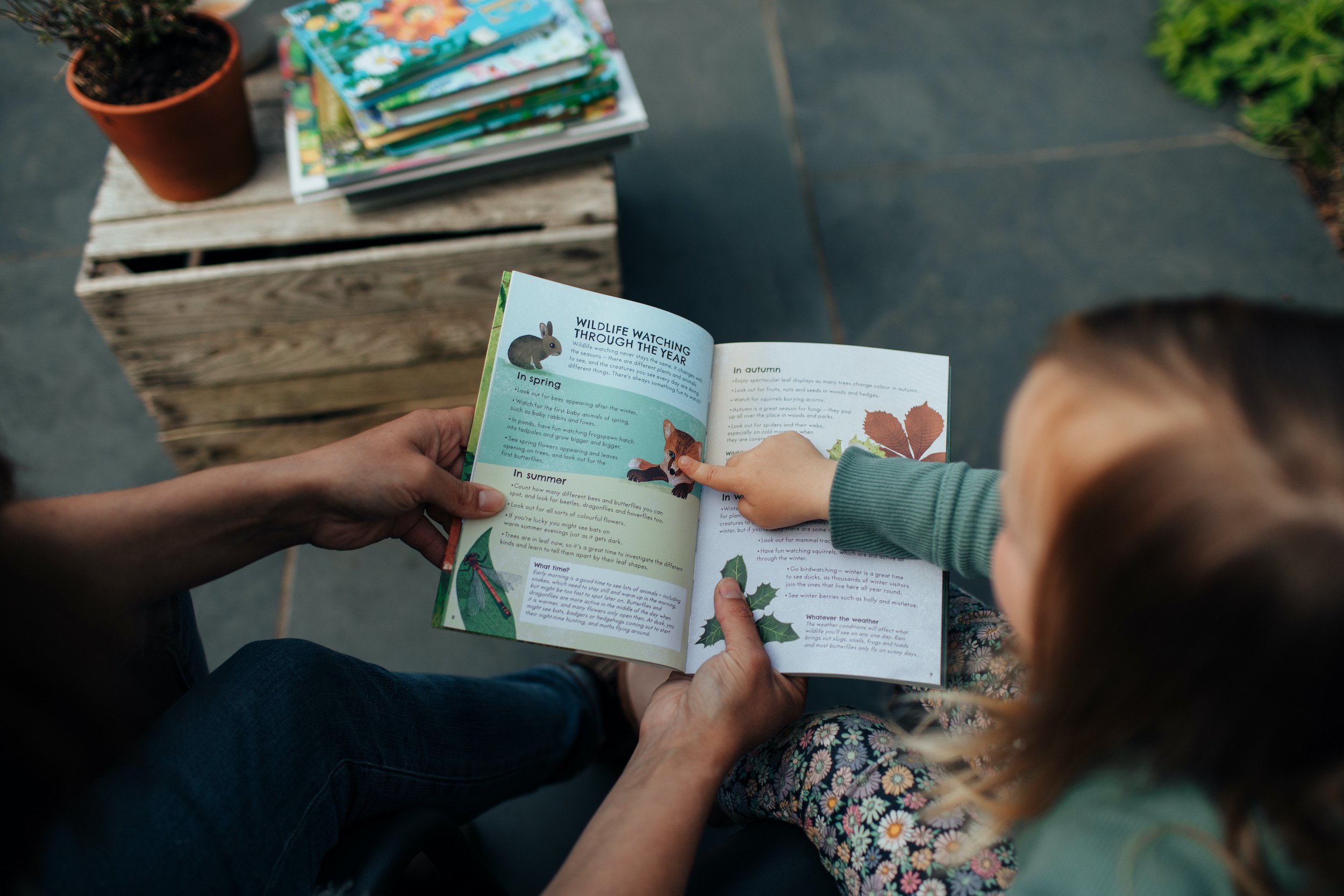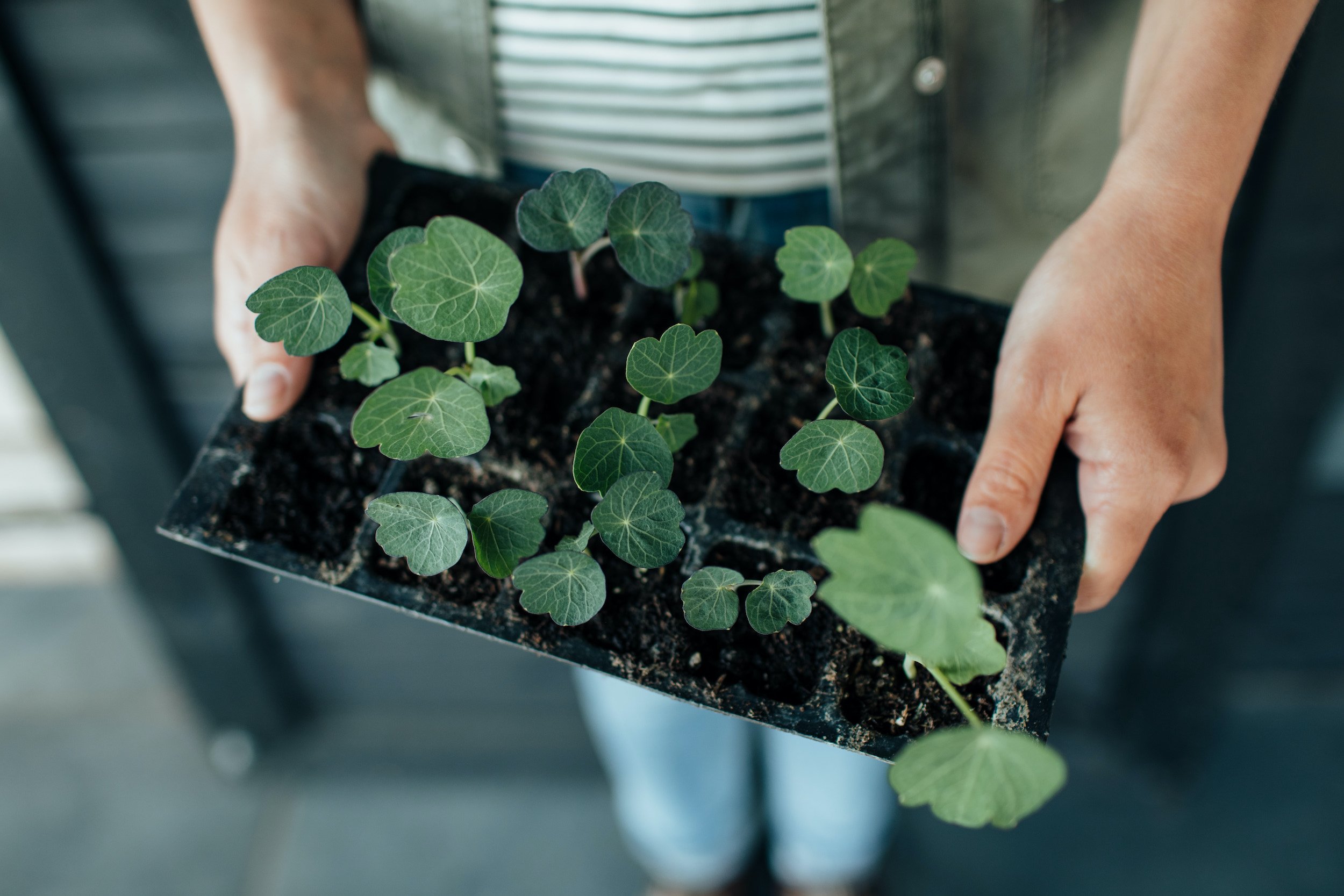Gardening with kids
There’s a magic to gardening that is really appealing to children – and which we love to share with our little one. A small seed, plonked into the soil, that becomes a gigantic sunflower a few short months later; a wildlife pond filled with frogspawn that slowly change into frogs; pulling a carrot fresh out of the soil, eating it for tea, and fully understanding where food comes from. All of life, after all, is dependent on that miracle where plants turn sunlight into energy and food that sustains the entire planet – and when you garden, you can see this up close, day by day…
There are so many ways for kids to get involved in the garden, from the cress heads, well-loved in schools, to genuinely helpful jobs! Whether your child is a natural garden lover, or needs a bit more coaxing to get outside, here are some tips to help foster a love for plants…
Start with simple jobs
Small hands are sometimes clumsy, so it’s best to start kids off with simple jobs, where it doesn’t matter too much if things don’t end up exactly where they should. If you’re sowing seeds, pick big seeds, like sunflowers or beans, rather than delicate fine seed, for example. If you’re watering, get them their own small watering can so they can come alongside you and top up where’s needed. (And try not to worry if they end up completely covered in water – it’s almost inevitable…)
Grow your own food
Growing something you can eat is especially enjoyable with children – particularly as so much fruit and veg grows from seed in a single season. We’ve found that tomatoes and carrots are both huge hits with our little one. Sow seeds in Spring time, and you’ll have something to eat a few short months later – with the enjoyment of watching germination and a plant growing along the way. Picking red tomatoes off a plant, or pulling carrots out of the soil is a popular activity with most children we know! Both can be eaten straight away after a quick wash (and tend to be more friendly to kids’ palates than beans as well, though that is another great plant for putting on impressive growing display in a short space of time…)
Raspberries are really popular in our house too (with the adults as well!) – and it’s fairly easy to fit a few raspberry canes in a permanent spot somewhere in most spaces. If you’ve got limited growing space, take a look for varieties that can grow well in pots.
Experiment with sensory plants
Most kids we know love to touch plants. Choosing plants that feel especially good, or that smell especially good when you touch them can encourage a really hands on experience. Try soft and strokeable plants like Stachys byzantina (Lamb’s ears), Salvia officinalis (cooking sage) or grasses like Lagurus ovatus (Bunny’s tails). For plants that smell good, of course there are lots of amazing flowers (roses, Philadelphus, and sweet peas all spring to mind) – but don’t forget plants with leaves that smell good too. Lavender, Artemisia (wormwood) and pelargoniums are some of our favourites (take a look for Pelargonium ‘Coca Cola’ for a real child-pleasing smell!) Lots of salvias have aromatic leaves – Salvia ‘Nachtvlinder’ is a recent discovery of ours that has gorgeous purple flowers and amazing scented foliage.
As well as smell and touch, you can think about sound and movement. Grasses that sway and whisper in breezes, poppy seed heads that you can shake out like a pepper shaker in the Autumn, and the rustle of wind going through a tree’s canopy all add magic to the garden (for children and adults alike…)
Dedicate a special patch
For those with older kids and bigger gardens, setting aside a dedicated growing space in a bed for each child is a really lovely way to teach about gardening and also help kids to feel independent. The pride of deciding what to plant, how to lay it out and how to look after everything encourages so many useful skills. And even disasters help kids learn a lot too… So if there’s nothing but bare soil by the end of the year, try again with a new plan next time!
Raise heights
Raised beds can be a great choice for children with mobility issues or who use wheelchairs. Think about either a permanent structure of hard landscaping (for example, brick raised beds or concrete planters) or you could use a more temporary set up, with raised wooden planters. If you’re designing with wheelchairs in mind, make sure to include generous sized paths and plenty of turning spaces.
Think beyond plants
Gardening isn’t only about plants and plant care. There is so much more fun stuff for kids to get involved with, such as making compost, spotting wildlife, and feeding birds. If you have space for a dedicated compost bin, you could involve your kids with adding everything into it, and talking about the breakdown of the organic matter – along with using it on the garden once it’s turned into glorious sticky humus! Wormeries take up less space, and have the added excitement of worms – though they can be more expensive to set up in the beginning. Wildlife ponds can be big or small – even a bucket or flower pot filled with water can provide
You don’t need outdoor space
If access to outdoor space isn’t available, either in a garden, balcony or allotment, there is still so much you can grow on a sunny windowsill! Of course, there’s the infamous cress heads, or broad beans grown on kitchen paper. But you could also make cactus gardens by planting a few small-growing cacti in a container with very free draining soil. You can use window sills to propagate house plants, by cutting off sections of stems and leaving them in water until the roots grow (tradescantia, monstera and pilea all propagate really well in this way). And a sunny windowsill is a great spot for a herb garden, which you can then use for cooking as well. Coriander, mint and basil will all grow happily in smallish containers on windowsills.
Don’t forget all of the amazing gardening activities you can do on public land as well. We love nature walks, animal spotting, and a good bit of foraging! Depending on the season, you could look for windfall apples, pick blackberries, or forage for wild garlic.









